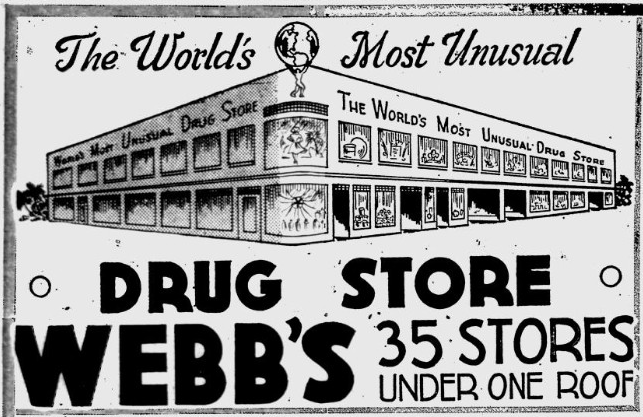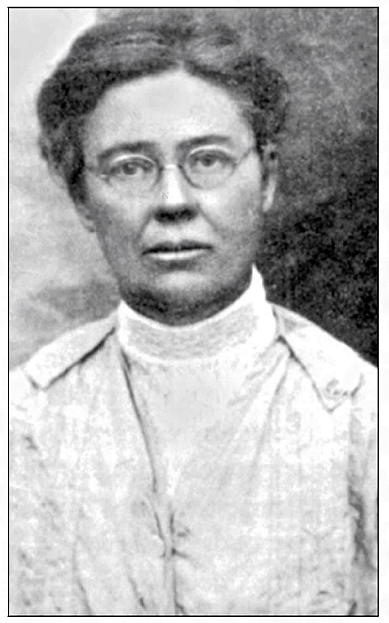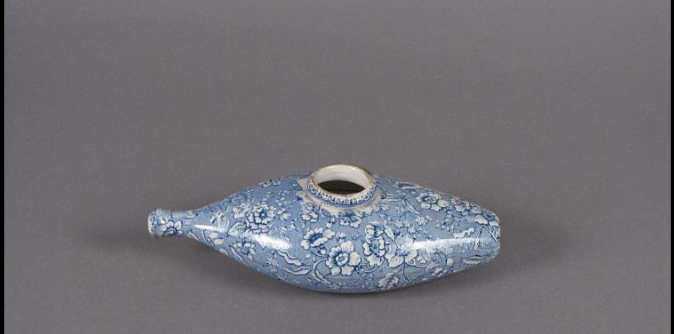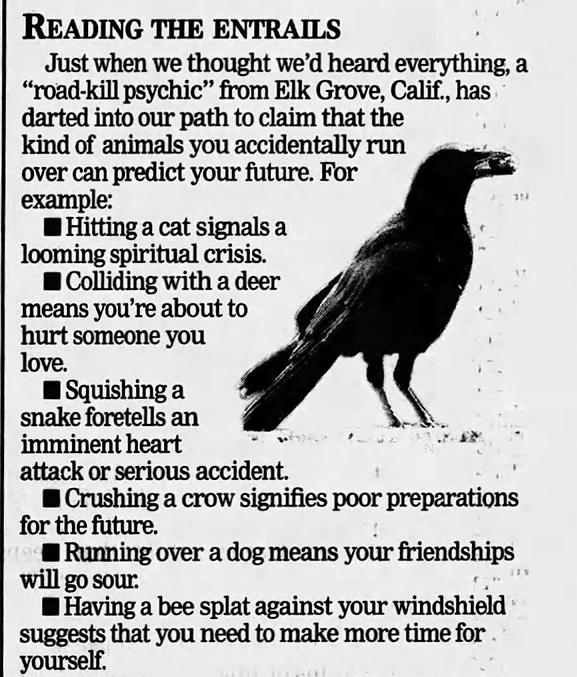June 2019
June 21, 2019
Spikehorn Meyer, Friend to Bears
One of the forerunners of those folks who cuddle up to bears. Luckily, Spikehorn was never hurt.Article here.
Find-a-grave site.
Posted By: Paul - Fri Jun 21, 2019 -
Comments (0)
Category: Animals, Cult Figures and Artifacts, Daredevils, Stuntpeople and Thrillseekers, Eccentrics, Regionalism, Twentieth Century
June 20, 2019
Woodpecker eats brains
Nature is brutal. And apparently, woodpeckers are particularly so.Smithsonian.com offers some background info:
Greeney has a possible explanation as to what’s happening—but it probably won't make you feel any better. When Gila woodpeckers get thirsty, he speculates, they crack open a couple of nestling heads like you or I might open a six-pack.
Warning: the video is not for the squeamish!
Posted By: Alex - Thu Jun 20, 2019 -
Comments (0)
Category: Nature, Violence
The World’s Most Unusual Drugstore

See their complete 1942 ad here.
"Stack it high and sell it cheap" was Doc Webb's motto. Over the years, he built his empire from a small drug store at Ninth Street and Second Avenue, opened in 1925, to a sprawling bazaar of 77 stores, covering seven city blocks. Webb was as much a national legend as his stores. The unorthodox, merchandising medicine man always had a gimmick to lure thousands of customers through the doors. At ten cents a dance, no wonder the Dancing Chicken generated excitement at Webb's City in this 1975 photo. He sold dollar bills for 89 cents and bought them back the next day for $1.35. He offered three-cent breakfasts, brought in animals that performed at the drop of a coin and mermaids who "talked." He made other merchants mad because he sold his wares below the suppliers' suggested prices.
Article source.
Posted By: Paul - Thu Jun 20, 2019 -
Comments (1)
Category: Business, Freebies, Come-ons and Loss Leaders, Eccentrics, Regionalism, Twentieth Century
June 19, 2019
The origin of white road lines
Road lines are of those things one tends to take for granted, but obviously someone had to first think of the idea, and credit for it is given to Dr. June McCarroll of Indio, CA.As told by the LA Times (Oct 12, 2003):
Later, while driving on another, newer highway, she noticed that the road had a definite middle joint where it had been widened from 8 feet to 16. The pronounced center ridge caused cars to stay on their own side. A center line painted down the middle would serve the same purpose, she decided.
Known for confidence and straight talk, she took her idea to the Riverside County Board of Supervisors and the Chamber of Commerce. They gave her a polite ear but nothing else.
She took direct action. She got down on her hands and knees and painted a 2-mile-long 4-inch-wide white stripe down the center of the road that passed in front of her house on Indio Boulevard.
She was sure that her example would illustrate the idea’s safety benefits, but change was slow to come. For seven years, she wrote letters and petitioned the county and state to adopt the white lines.
Finally, with the support of the Indio Women’s Club and the California Federation of Women’s Clubs — which had previously campaigned to add roadside markers and to preserve El Camino Real — she prevailed. In 1924, the Legislature authorized the State Highway Commission to paint center lines.
From Doc June’s idea sprang colors, stripes and other markings on streets and highways to enhance motoring safety. By the time she died in 1954, at 86, striping highways was commonplace across the country.

Dr. June McCarroll
There is some controversy, since two Michigan men (Kenneth Sawyer and Edward Hines) apparently had the same idea before McCaroll. And they even painted some white stripes on a road. But unlike her, they don't seem to have tried to get their state government to adopt the idea. So, I think McCarroll rightly gets credit as the originator of the idea.
Posted By: Alex - Wed Jun 19, 2019 -
Comments (3)
Category: Highways, Roads, Streets and Traffic, 1910s
Hot Dog Boogie
Posted By: Paul - Wed Jun 19, 2019 -
Comments (2)
Category: Music, Dogs, 1950s
June 18, 2019
Cowboy Throat Singing
In Mongolia, there's an ancient tradition of "throat singing." Wikipedia defines this as: "a type of singing in which the singer manipulates the resonances (or formants) created as air travels from the lungs, past the vocal folds, and out of the lips to produce a melody... This resonant tuning allows singers to create apparently more than one pitch at the same time (the fundamental and a selected overtone), while actually generating only a single fundamental frequency with their vocal folds."Somehow, back in the 1920s, the cowboy singer Arthur Miles independently hit upon this technique and integrated it into several songs.
You can hear it in the song below at around the 0:50, 2:50, 4, and 5 min marks.
via Bifurcated Rivets
Posted By: Alex - Tue Jun 18, 2019 -
Comments (2)
Category: Music
Calvin and the Colonel
From the Wikipedia entry:
"The series was an animated remake of Amos 'n' Andy... and featured the voices of Freeman Gosden and Charles Correll[1] from the radio series (in fact, several of the original radio scripts by Joe Connelly & Bob Mosher were adapted for this series). Using animals avoided the touchy racial issues which had led to the downfall of Amos 'n' Andy."
Posted By: Paul - Tue Jun 18, 2019 -
Comments (0)
Category: Animals, Anthropomorphism, Racism, Stereotypes and Cliches, Television, Cartoons, 1960s
June 17, 2019
Recipe for Boiled Wife
Using cannibalism to help sell air-conditioning.
Newsweek - May 24, 1965

Dixon Evening Telegraph - May 8, 1970

Smithfield Times - Aug 5, 1970
Posted By: Alex - Mon Jun 17, 2019 -
Comments (6)
Category: Cannibalism, Advertising
Mystery Gadget 77

Maybe an ocarina?
The answer is here.
And after the jump.
More in extended >>
Posted By: Paul - Mon Jun 17, 2019 -
Comments (4)
Category: Eighteenth Century, Nineteenth Century
June 16, 2019
Roadkill Psychic
In the late 1990s, psychic Terrie Brill of Elk Grove, California made headlines by claiming that roadkill could be used to predict the future. Specifically:Running over a deer means you're about to hurt someone you love.
Crushing a crow with your car means you're not prepared for the future.
Rolling over a snake could mean you're about to have a heart attack or other serious accident.
If you run over a dog, expect your friendships to take a turn for the worse.
If a bee collides with your windshield, you need to make more time for yourself.
... mashed mosquitos have no effect whatsoever on your future.
Brill died in 2001, but her son maintains a Facebook page about her, promoting her posthumously published book The I-Factor. Unfortunately, the Facebook page doesn't seem to contain anything about the roadkill predictions.

Terrie Brill

Edmonton Journal - Sep 8, 1998
Posted By: Alex - Sun Jun 16, 2019 -
Comments (1)
Category: Animals, Death, Predictions, 1990s
| Get WU Posts by Email | |
|---|---|

| Who We Are |
|---|
| Alex Boese Alex is the creator and curator of the Museum of Hoaxes. He's also the author of various weird, non-fiction books such as Elephants on Acid. Paul Di Filippo Paul has been paid to put weird ideas into fictional form for over thirty years, in his career as a noted science fiction writer. He has recently begun blogging on many curious topics with three fellow writers at The Inferior 4+1. Chuck Shepherd Chuck is the purveyor of News of the Weird, the syndicated column which for decades has set the gold-standard for reporting on oddities and the bizarre. Our banner was drawn by the legendary underground cartoonist Rick Altergott. Contact Us |

